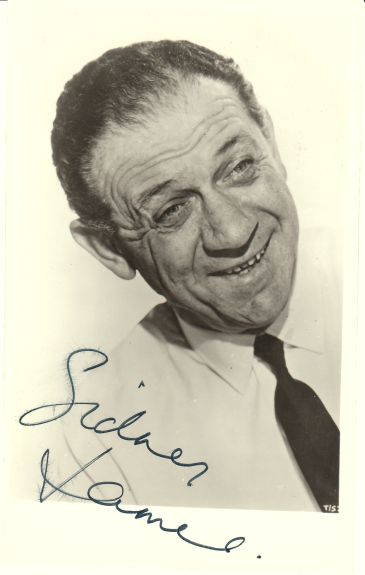
Elvis, starring Elvis Presley, was the title of a 1968 United States television special. Sponsored by the Singer Sewing Machine company, it aired on December 3, 1968 on the NBC television network. The special is commonly referred to as the '68 Comeback Special, because of subsequent developments in Presley's career, but the soundtrack album was released simply as NBC - TV special. It was directed by Steve Binder and produced by Binder and Bones Howe.
Presley's informal jamming in front of a small audience in the '68 Comeback Special is regarded as a forerunner of the so-called 'Unplugged' concept, later popularized by MTV.

Partly due to the repetitive scripts and laughable song choices, as well as the general feeling that he was "uncool", Presley's films had been making less money with each release and he was tiring of Hollywood. Colonel Parker, Presley's manager, had found it increasingly difficult to secure the usual $1,000,000 fee for a Presley film, and had no alternative than to take a different approach. Parker negotiated a deal with NBC for $1,250,000 to finance both a television special and a film (1969's Change of Habit).

Parker wanted the show, which was scheduled as a Christmas season broadcast, to be little more than Presley singing Christmas carols. He believed the special could simply be a TV-version of the Christmas radio show Presley had contributed to the year before. Binder argued that the special was an opportunity to re-establish the singer's reputation after years of formulaic movies and recordings of variable quality. He and Howe hired writers to script a show with specific themes: they envisaged large set designs, dance sequences and big productions of Presley's hits. However, Binder was open to any variations on this that would showcase the singer's talent, and Presley was apparently very happy to go along with this flexible approach.

The special eventually included an extravagant musical sequence featuring Gospel-style numbers, a semi-autobiographical "mini-movie" centered around the song "Guitar Man" and other re-recordings given lavish set designs. A segment set in a bordello featuring the song "Let Yourself Go" was initially passed by the network's censors, but was removed at the request of the show's primary sponsor, Singer Corporation, as it was deemed too risqué. (The first public appearance of this sequence was in the expanded video version of the 1981 documentary film This is Elvis. It was later restored for RCA's 3-DVD release in 2004.) The special ends with Presley appealing for world peace with the song "If I Can Dream."
Studio recordings for these segments were made at Western Recorders in Hollywood, California between June 20 and 23 and featured an orchestra and The Blossoms as background vocalists: Fanita James, Jean King and Darlene Love. Other musicians included drummer Hal Blaine, pianist Don Randi, guitarist Tommy Tedesco, bass player Larry Knetchel and harmonica player Tommy Morgan.




It was after rehearsals at Western Recorders that Binder took special note of how Presley and the other musicians would spontaneously unwind by improvising old blues and rock 'n' roll numbers. Binder commented: "...and that's when I really got the idea: Wouldn't it be great if I had a camera in here and they didn't know I was here?"
Presley is said to have been very apprehensive about the idea of performing live. His last live concert had been at the Bloch Arena in Pearl Harbour, Hawaii, on March 25, 1961. Binder offered a lot of support and reassurance to stop the singer from rejecting the idea of any live segments. He realized some songs already re-recorded or scheduled would need to be cut (The special was only an hour long). He quickly arranged for rehearsals to take place to capture the feel of Presley's informal studio jamming, drafting in the surviving members of Presley's original backing band - Scotty Moore and D.J. Fontana (bassist Bill Black had died in 1965).


The edited broadcast of December 3 - combining the big, choreographed numbers, lavish sets and some of the informal live sessions - was an enormous success. The show was the highest-rated television special of the year. According to Binder, it was probably the first one-man TV special to appear on commercial American television. Previously, TV specials tended to be packed with guest stars, like Frank Sinatra's Timex Special of 1960, in which Presley himself appeared with other celebrities, including Peter Lawford and Sammy Davis Jr..
At the beginning of the '68 Special project, a nervous Presley had said to the executive producer Bob Finkel: "I want everyone to know what I can really do." Critics generally agree that the broadcast did show what Elvis Presley really could do - in addition to making profitable, if generally uninspired movies and soundtracks. The '68 Special is widely credited with revitalizing his career: chart statistics for the summer of 1968 suggest that Presley's recording career was becoming all but non-existent. After the special, he began his stint in Las Vegas and toured, achieving a string of record-breaking sell-out performances across America. Chart successes returned, including a U.S. number one in 1969 ("Suspicious Minds") and a U.K. number one ("The Wonder of You", (1970)) - his first since 1965.
The live segments of the '68 Comeback Special in particular gave the audience more than a glimpse of Presley's charismatic and emotionally charged performing style that won him his first fans in the 1950s. This is arguably even more evident in the later uncut versions of the special (see below). His career had been considered by many to be artistically fallow since his return from the Army (1960), the subsequent Beatles invasion and since the new and varied musical directions forged by the likes of the Rolling Stones, Bob Dylan and Jimi Hendrix.



No comments:
Post a Comment